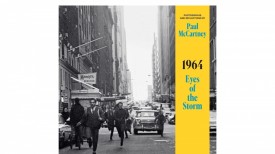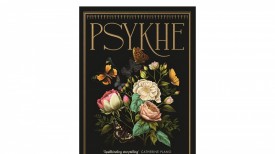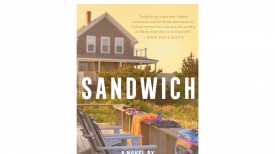‘The Briar Club’ by Kate Quinn Book Review: A Thrilling Tale of Female Friendships and Secrets

Read our review of "The Briar Club" by Kate Quinn, a thrilling tale of female friendships and secrets that will keep you on the edge of your seat.(Photo : Amazon/Kate Quinn)
"The Briar Club," Kate Quinn's most recent book, deftly combines mystery, history, and the complex relationships of female friendships. Set against the Red Scare in 1950s Washington, D.C., this book transports readers through secrets, suspense, and the relationships that develop in the most improbable settings.
Briarwood House is the center of the Briar Club. It is a boarding house for women where everything behind a white picket fence is hidden. The mysterious widow Grace March moves into the attic room, which brings her neighbors from different backgrounds together in a way they did not expect. Included are Fliss, an English beauty who seems perfect on the outside; Nora, the daughter of a police officer involved with a gangster; Beatrice, an unhappy former baseball star; and Arlene, a devoted supporter of McCarthy's "Red Scare."
Grace's presence at Briarwood House causes things to change. Her weekly dinner parties in the attic room and homemade sun tea help the residents feel like they are part of a community, helping them heal. However, Grace has a dark secret of her own. When a shocking act of violence happens in the house, the women have to face the real enemy who lives among them.
A Time of Fear and Change
As stated by AP News, Quinn does a great job of capturing the common fear and suspicion during the McCarthy era. The book is set in the 1950s, giving it a lot of historical background and showing how women's roles have changed since WWII. With her characters, Quinn looks at many things in the '90s, like the birth control pill, the corruption in the D.C. police force, and the end of a professional baseball league for women.
The main riddle of the book is a murder that starts on Thanksgiving Day in 1954. The way Quinn tells her stories - by jumping back and forth in time - keeps readers on the edge of their seats as they put together hints and make a web of suspects. This non-linear storytelling gives the story more depth and drama, keeping readers interested.
Rich Characterization and Unique Twists
One of Quinn's skills is creating interesting characters with many layers. The main character, Grace March, is shown to be caring and makes the boarding house feel like a home. The flowers and vines she paints on her ceiling and how they spread down the stairs are a metaphor for how she helps the women grow and connect.
A review in Chron said Quinn also adds nice touches that make the book special. Including recipes for the food and drinks served at Grace's supper club makes the book more engaging and draws readers deeper into the story.
Short chapters written from the house's point of view add an amusing and interesting twist. One example is when the house trips the detective up while he is questioning the women by rucking the edge of the carpet. This adds a bit of fun to the tense scenes.
A Sign of Strength and Unity Among Women
The book is more than just a murder story; it shows how strong and tough women can be. Quinn's picture of the different characters and how their stories are linked shows how important it is for women to stick together when things go wrong. The women of Briarwood House have their problems, but they stick together and help and protect each other as they deal with the problems of their time.
Conclusion
Quinn's book is exciting and personal. It combines mystery, history, and the complicated relationships between women in a way that flows naturally. Quinn brings the 1950s to life and gives the reader the impression that they belong at Briarwood House when she writes. Fans of historical fiction and mysteries should read this book because it boasts a fantastic story, engaging characters, and surprising turns of events.
RELATED ARTICLE: 'If You Tell' by Gregg Olsen Book Review: A Harrowing True Crime Tale
© 2023 Books & Review All rights reserved.
Popular Now
1
Books to Read After 'Fourth Wing': Top Picks for Fantasy and Romantasy Fans

2
‘The Secret Public’ by Jon Savage Book Review: An Insightful Look Into the LGBTQ Influence

3
Stephanie Regalado's 'If They Only Knew' Column Is Now A Book, Unleashing 60 Anonymous True Stories to Empower Women

4
'No Wire Hangers' Scene That Almost Did Not Happen: New Book Reveals Faye Dunaway's Struggles

5
Rare First Edition of Aphra Behn's Novel 'Oroonoko' Discovered in Kent: A Historic Literary Find

Latest Stories
Book Reviews
‘The Secret Public’ by Jon Savage Book Review: An Insightful Look Into the LGBTQ Influence

Book News
Stephanie Regalado's 'If They Only Knew' Column Is Now A Book, Unleashing 60 Anonymous True Stories to Empower Women

Book News
'No Wire Hangers' Scene That Almost Did Not Happen: New Book Reveals Faye Dunaway's Struggles

Book Reviews
‘The Perfect Couple’ by Elin Hilderbrand Book Review: A Captivating Summer Mystery

Book News
New Book ‘The Franchise’ Reveals Penguins President Kyle Dubas’ ‘Biggest Mistake’ as Maple Leafs GM











